|
|
BJJY ADVISORY BOARDS
Executive Board
Senior Advisory Board
|
|
Every effective organization
and leader has a group of advisors - a group of people to whom a
leader or organization can go to for advice. An advisory board
can serve many purposes. It can be a sounding board or a source
of wisdom and experience for others to draw upon.
I am very fortunate in that I have two distinct groups of
martial artists I can call on for advice. First are my senior
black belts whom I also refer to as my Executive Board. I know I can depend on them for honest and sincere
feedback. They are also not afraid to speak out when something
seems to be awry. They each have their individual personalities,
strengths, and weaknesses [as we all do]. However, I also know
that they will be honest with me because I prefer them to be
that way with me. Although their honesty can be painful for me
at times, it is simpler in the long run. They know I'm
intolerant of "yes people" as "yes people" aren't true advisors.
They're simply puppets.
My second group of advisors are senior martial artists
[including non-jujitsu yudansha] whom I have known for decades.
They are collectively known as my Senior Advisory Board. I would like to consider them my peers, not solely based on
their dan grade, but because of all of their accomplishments
inside & outside the martial arts community. They are confident,
competent, humble, professional, dedicated and have an extremely
high level of integrity. I've learned to trust in their
judgment, wisdom, and sincerity. I know they are dedicated to
the traditional values of the martial arts while remaining
open-minded. I know I can go to them with almost any problem and
get good, honest advice. It is my hope that these exceptionally
fine martial artists will continue to help me and the BJJY for
years to come. It is also my hope that my senior black belts can
go to these exemplary advisors if they need advice in dealing
with BJJY matters should anything happen to me that prevents me
from being the head instructor of the BJJY
BJJY Mission Statement
[adopted by the Executive Board
8-14-2011]
The BJJY is an organization dedicated to
supporting,
educating and promoting
an exchange of skills
and knowledge among
the Budoshin Ju-Jitsu black belt community so that they can
continue to grow in the art and effectively teach the skills and
values of Budoshin Ju Jitsu to others.
BJJY Vision
Statement [adopted by the
Executive Board 8-14-2011]
So, how do we accomplish
this? How do we make
black belts want to continue to learn Budoshin Jujitsu, to
teach, maybe open a dojo, and to give back (contribute) to the
Budoshin Jujitsu community?
We have determined that there are
three areas of focus around which
we can build an organization that black belts will want to
continue to be a part of:
Continued
Training – We must impress on our senior students that
shodan is just the beginning. They must understand that there is
far more to learn in Budoshin Jujitsu by striving for the
higher degrees, and mastery only comes through continued
training. The Yudanshakai will provide that training.
Networking – We must create a
community/association where members feel welcome, and that they
can also make a contribution. The only way they will stick
around is to feel they can be an important part of the
organization. We can accomplish this through seminars,
promotions, tournaments, general get-togethers and other events
and activities. They
also need to know that they can get support from the Budoshin
Jujitsu Yudanshakai in managing their dojo as well as acquiring,
teaching and retaining students.
Credibility – We must be an
organization that members know will give them credibility by
providing a set of standards and values that the public, other
martial arts organizations
and yudansha within the
Budoshin Ju-Jitsu Yudanshakai
appreciate, respect and will
nurture.
|
|
Members of the BJJY Executive
Board: |
| |
| |
|
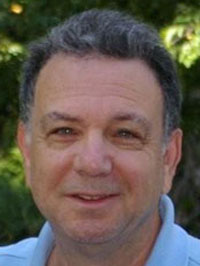 Marc
Tucker, 7th dan Marc
Tucker, 7th dan
I began my study of
JuJitsu under Seki Sensei in 1964 receiving my Shodan in 1968.
Seki promoted me to Nidan in 1970 and then I began to train in
Shotokan with Fujishima Sensei to learn kicks and strikes which
I felt Seki Sensei did not emphasize. I also had the pleasure
of training with Oshima Sensei in Shotokan.
I have studied
Aikido, Judo and Krav Maga more to add to my knowledge and not
for the rank and have integrated techniques that are highly
successful in self defense.
|
|
|
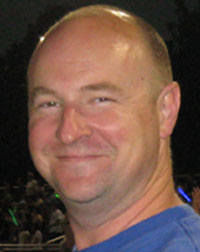 Chris
Hendricks, 6th dan Chris
Hendricks, 6th dan
BA, LMT, FLEOA.
Chris has been training in and teaching martial arts
since 1981. He holds Yudansha grades in Isshin-Ryu Karate
(1st), Bujinkan Budo Taijutsu (2nd), Yoshimishinki Ryugi Ju
Jutsu (6th) and Budoshin Ju Jitsu (5th). He has trained
civilians, law enforcement and military personnel in all aspects
of self-defense and personal protection.
Chris currently works and
trains in Northern Virginia. |
|
|
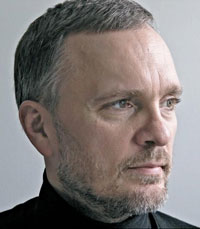 Thomas
Salander, 6th dan Thomas
Salander, 6th dan
Thomas has been teaching
JuJitsu since 1997 when he founded the Arlington Budoshin
JuJitsu Dojo. He has trained in Budoshin JuJitsu since 1991 and
is a student of Professor George Kirby. Thomas was the editor
of Okuri, the journal of the American JuJitsu Association, from
2000 to 2007. He was selected to be a member of the BJJY
Executive Board in 2011. |
| |
| Steven Castorena, 4th dan |
|
|
Members of the BJJY Senior Advisory
Board: |
| |
 Sam
Combes, Shihan,
Kadokan Yoshinkai Dojo, 6th dan Sam
Combes, Shihan,
Kadokan Yoshinkai Dojo, 6th dan
Growing up in Hawai’i, martial arts were a constant
attraction. After
getting discharged from the U. S. Army in 1961, Sam Combes
joined the Shotokan dojo in Honolulu and studied under Hirokazu
KANAZAWA sensei for a few months.
In 1963 Sam became a Honolulu Policeman. In
the course of the next few months the police academy introduced
Judo and Aikido to the rookie officers.
Sam developed an interest in Aikido during the academy.
In 1964 Officer Combes was introduced to
another style of Karate (GOJU) with a friend from the police
department. Sam
studied a few months before another fellow officer introduced
him to Yukio NOCUCHI sensei of the Yoshinkai style of Aikido.
In 1967 sensei NOGUCHI gave permission to
brown belt COMBES to teach a few students as he was moving to
Norwalk, California.
The classes began in his living room and soon moved to a
student’s 2 car garage.
One of the students introduced them to the Japanese Community Center
in Norwalk
where they were allowed to teach in an old building on the
property. Sam was fortunate to eventually opened dojo in
Gardena, Bakersfield, Dominguez, San Francisco, and Los
Alamitos. Branch
dojo were opened in Kansas City, Kansas and associated with
sensei Stephen HAMILTON in Eugene, Oregon.
With the help of sensei HAMILTON and others,
he developed KEISATSU AIKIDO of America, Inc.
The purpose of this group was to teach police officers
Aikido geared toward the law enforcement community.
The goal was to develop black belt officers after a two
year program. Aikido
can be an enhancement to the Police Weaponless Tactics program
In the late 1970’s, NOGUCHI sensei developed
an independent style and so Sam went directly to SHIODA Gozo,
kancho and founder of the Yoshinkan and the style of Aikido most
closely related to police work in general.
Sam is currently ranked as ROKUDAN (6th
degree black belt) and has a teaching certificate allowing him
to promote students to the YONDAN (4th degree black
belt) level.
The name of his school was developed by
kancho SHIODA. The
KADOKAN. Some
translate it as meaning “California Way House”.
It seems appropriate and fits well with the current
curriculum.
Headquartered in
Anaheim,
California, Sam maintains a small
cadre of students and instructors.
|
| |
|
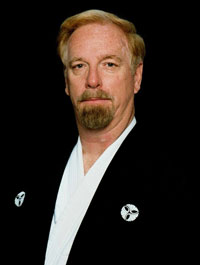 David
Dye,
Soke of Shuyokan Ryu, 10th dan David
Dye,
Soke of Shuyokan Ryu, 10th dan
Sensei David Dye was born in Los Angeles, CA, on February 27,
1945. He began his
martial arts training with the study of Kodokan Judo in
Inglewood, CA, in 1962 under Sensei Treese. He paid for his
lessons by coming to the dojo after school and cleaning the dojo
and helping his instructor with teaching classes and public
demonstrations.
In 1964 Sensei Dye moved to Costa Mesa, CA, where he began
training with his second Judo instructor, Sensei Earl Robbins.
Sensei Dye continued both his training and competition. He was
soon given a teaching position as a Judo instructor at the
Harbor Area Boys Club in Costa Mesa.
After 33 years of teaching and training, he was awarded
his 5th degree Black Belts in both Kodokan Judo and
Jujitsu in January, 1997.
Sensei
Dye started studying Shito-Ryu Karate in 1967 under Sensei Fumio
Demura of the Japan Karate Federation in Santa Ana, CA. Sensei
Dye would later go on to study Shotokan Karate in 1978 under one
of his Boys Club Judo students and a long time student of Demura
Sensei, Dan McGeough Sensei. He finally received his 1st Degree
Black Belt in Shotokan Karate Jutsu in 1997 under Earl Treichel
Sensei of the Coast Defensive Arts Center, Huntington Beach,
CA,. On January 25, 2002 Sensei Dye was awarded the rank of
Sandan in Shotokan Karate Jutsu by Treichel Sensei.
In 1966 Sensei Dye became a Reserve Police Officer with the City
of Costa Mesa Police Department in Orange County CA,. In 1967 he
became a full time Costa Mesa Police Officer and retired in 1997
after serving 31 years. His assignments included Patrol, Desk
Officer, Custody Officer, Court Liaison Officer and
Investigation. During the mid 1970s, Sensei Dye was appointed to
the position of Lead Defensive Tactics Instructor for the police
department by the department’s Training Coordinator, Senior
Officer Art Courteau. After his retirement in 1997, he chose to
stay on as a Senior Reserve Officer for an additional three
years so that he could continue to train officers in Defensive
Tactics and Officer Safety. He has instructed over 300 officers
in the use of the Orcutt Police Nunchaku and has testified as a
court expert on the use of force.
He continues to instruct law enforcement officers at the
Shuyokan Dojo, local police departments throughout CA,, and as
an Assistant Defensive Tactics Instructor at the Orange County
Sheriff’s Department’s Regional Academy.
Although Sensei Dye began his early study of Aikido around 1967
under Ernie High Sensei, he began a serious study of Yoshinkan
Aikido in 1978.
After receiving his 1st and 2nd degree black belt
rankings in Aikido, he was awarded his 3rd Degree Black Belt and
Teaching Certificate in 1990 in person and directly from the
founder of Yoshinkan Aikido, Soke Gozo Shioda. During that same
year, the son of Gozo Shioda, Yasuhisa Shioda, came to the Dojo
to award Sensei Dye with the official certification and naming
of the Dojo as “Shuyokan”. This was the second Dojo in the world
outside of Japan to be named and registered with the
International Yoshinkan Aikido Federation.
In 1998, Sensei Dye tested and received his 4th Degree
Black Belt in Yoshinkan Aikido from Shihan Sam Combes of the
Kadokan Yoshinkai Dojo, Anaheim, CA,.
From 1991 to 1994, he produced an 8 volume set of video tapes on
the use of Yoshinkan Aikido Techniques for Law Enforcement and
has been featured on national television and in leading martial
arts magazines demonstrating his practical techniques of Aikido.
In 1993 Sensei Dye was inducted into the World Martial Arts Hall
Of Fame receiving the Lifetime Achievement Award. In 1995 he was
awarded an 8th Degree Black Belt in Aikido Taiho Jutsu by the
World Martial Arts Hall of Fame Sokeship Council.
Sensei Dye was inducted into the Masters Hall of Fame in
2000 and was the recipient of the Founders Award from the World
Head of Family Shokeship Council's Hall of Fame in 2001.
On April 7th, 2000, at a ceremony that was attended by more than
100 guests from around the world honoring Shuyokan’s 20th
year in operation and Sensei Dye’s 38th year in the
martial arts, he was officially named Soke of Shuyokan Ryu and
promoted to the rank of 10th Degree Black Belt (Judan)
in Shuyokan Ryu, by ‘Olohe
Solomon Kaihewalu and five other high ranking black belt legends
from the World Professional Black Belt Martial Arts
Organization.
Serving as an Independent Contractor for Ki International,
Sensei Dye was involved in training members of the United States
Army Special Forces, Airborne Division, at Fort Bragg, North
Carolina, in techniques that would later be used for both
wartime use homeland security.
Other members of U.S. Military Forces have also studied
and used his techniques of Shuyokan Ryu Aikido during their
missions while stationed in Iraq.
Sensei Dye has appeared with and been involved in choreographing
martial arts fight scenes for such well known actors as, Fabian
Carrillo, and Pepe Serna in the movies Latin Dragon and Double
Tap.
He is also the writer and editor of the first edition book
entitled “Ancient Hawaiian Martial Art of Kaihewalu ‘Ohana Lua”
by ‘Olohe Solomon Kaihewalu and has been studying the Kaihewalu
‘Ohana Lua since 2001 under the personal instruction of ‘Olohe
Solomon Kaihewalu.
|
|
|
 Bruce H. Jones, MS,
FCIA, PPS, 11th dan* USCSA/Sombo Bruce H. Jones, MS,
FCIA, PPS, 11th dan* USCSA/Sombo
Federal Special Agent (Ret.) B. Hetrick “Bud” Jones, MS, FCIA,
PPS; successfully completed a career of 35 years of combined
military, and police service at the city, county, state, and
federal levels. His
martial arts and police defensive tactics accomplishments
include the following:
currently a sixth degree black belt master teacher in
Japanese jujitsu and Russian “Samoz” (self-defense).
His master teachers include: Bruce H. Jones, Sr. (US Army
SF,Ret.), G.P. Nobles (USMC,Ret.), Dennis McCurdy, George Kirby,
Takayuki Kubota, Tetsuya Higuchi, Shoto Tanemura, Michael
Galperin, Cardo Urso (USMC,Ret.), and Philip Porter.
Earlier in his career, “Bud” Jones was a paratroop commando
teaching jungle warfare and survival in Panama with emphasis on
counterinsurgency, riot control, bayonet, close quarter combat
(CQC), and all long and short firearms.
He has had his own successful American Jujitsu Assn.
(AJA) school in the WDC area for over 15 years now teaching:
taihojutsu, jujitsu, judo, kendo, jojutsu, hanbojutsu,
jutte, wushu, Russian Samoz, keibojutsu, hojutsu, and CQC.
. Bruce has
served as an instructor at: the FBI Academy, Federal Law
Enforcement Training Center, International Assn. of Chiefs of
Police, International Airport
and Seaport Police Assn. in Seattle (while leading an Asian
Organized Crime Task Force), and
the Close Combat Instructor Trainers Course and Marine Martial
Arts Program in Quantico, VA.
He wrote the professional standards for modern taihojutsu
in the USA in 1985, and has been licensed
as an advanced police defensive tactics instructor, and tactical
officer trainer by the Police Martial Arts Assn. and Police
Officers Standards and Training (POST) since 1990.
He qualified as a licensed master teacher of defensive
tactics at the FLETC and grandmaster pistol marksman with the
highest score ever achieved on the combat course at FLETC in
1989. Bruce is a
licensed professional bodyguard and founded his own Corp., DBA
Professional Protection, Investigations, and Training, Inc. in
the WDC Metro area.
He has protected the President of the United States, Pope John Paul II, U.S.
Ambassadors, royalty, and the President of the World Bank.
Under the
Amateur Athletic Union (AAU) in the Potomac Valley/WDC, Bud has
been a coach, trainer, international referee, and athlete as
judo, jujitsu, and Russian jacket wrestling program chairman.
He has led four official PVAAU USA martial arts
teams to US Nationals, Pan-American, and World Championships in
1995, 1999, 2000, and 2001.
He is also the past president of the U.S. Sombo Assn, and
co-founder of the American Sombo
Academy.
He was
one of the original inductees into the Russian Sombo Martial Art
and World Sport Hall of Fame, where the 11th Degree rank
recognizes his service as President and co-founder of American
Sombo; Presented at the Sombo World Championships in Billings,
Montana, 30 June 1999.
B2jones@comcast.net
*NOTE: This 11th degree is explained
in detail on page 30 of J. Lawler, The Martial Arts
Encyclopedia, 1996, Masters press, Indianapolis, IN.
 Prof.
Tony Maynard, 9th dan, American Combat Ju-Jitsu Prof.
Tony Maynard, 9th dan, American Combat Ju-Jitsu
Former Marine
9th dan American Combat Ju-Jitsu,
American Ju-Jitsu Association
4th dan Isshinryu Karate
2nd dan Judo
Past Chairman of the World Council of Jiu-Jitsu
Organizations
Past Head Coach of U.S. Ju-Jitsu Team
Manager of U.S. Ju-Jitsu America
2006 Professor Chow Choon Award
Southern Region Director, American Ju-Jitsu
Association
Southern Region Director, Ju-jitsu America
Past President, U.S. Ju-Jitsu Association
Founder of American Combat Ju-Jitsu System
First American to compete in the WCJO World
Ju-Jitsu Championships, 1984
Certified Hand-to-Hand Combat Instructor,
Dept of the Navy
Member of Ju-Jitsu America’s Black Belt Hall
of Fame
Member of World Martial Arts Hall of Fame
Member of World Head of Family Sokeship
Council Hall of Fame
Instructor of the Year Ju-jitsu America 1991
Instructor of the Year, American Ju-Jitsu
Association, 1985
Certificate of Recognition, Distinguished
Service Aware, Ju-Jitsu America
Certificate of Recognition, American Ju-Jitsu
Association
Distinguished Service Award, Canadian
Ju-Jitsu Association
Certificate of Special Recognition, U.S.
Congress
President’s Award, American Ju-Jitsu
Association
East Coast Instructor of the Year 1983 and
1984, American Ju-Jitsu Association
Member of Board of Advisors to Prof. Wally
Jay’s Small Circle Ju-Jitsu
Owner & Operation of American School of
Self-Defense, Inc., Kernersville, NC
Student of Professor Wally Jay
Producer of three American Combat Ju-Jitsu
videos.
www.americancombatjujitsu.com
|
|
|
|
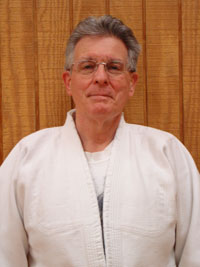 Dennis
McCurdy, Hanshi, 10th dan Dennis
McCurdy, Hanshi, 10th dan
J. Dennis McCurdy, Ph.D., F.A.I.C., D.A.B.T.,
A.S.Q.
U.S. Army 1966 to 1981
Dr. McCurdy holds advanced degrees in chemistry from the
American University, Washington, DC with post-Doctoral studies
at the Department of Pharmacology, College of Medicine, Howard
University, Washington, DC
Senior Scientist, U.S.F.D.A.
President of the American Ju-Jitsu Association
Member, American Ju-Jitsu Association Board
of Directors
Certification Chair, Dai-Nippon Seibukan Budo/Bugei-kai, Kyoto,
Japan
Ranked in Judo, Ju-Jutsu, Kendo and the Aiki Arts
Member:
Dai-Nippon Iaido Renmei
Zen-Nippon Rengai
Kokusai Budoin
Shin Tenshi Shin’yo-ryu Aiki-Bujutsu, Hombu, Kyoto,
Japan
Nippon Kobudo Kumiai
|
|
|
|
|
|
|
|
|
